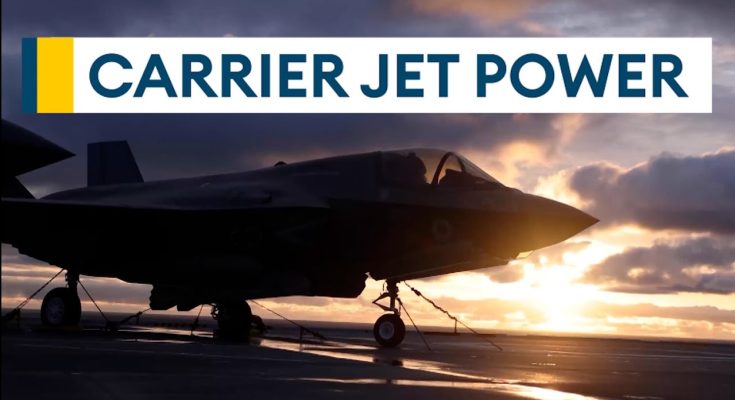Lightning Ready: F-35 Pilots Gear Up for Carrier Strike Group Action
The F-35 Lightning II, one of the most advanced multirole stealth fighter jets in the world, is an integral component of modern naval warfare. As the U.S. Navy continues to sharpen its readiness, F-35 pilots are gearing up for key operations with the Carrier Strike Group (CSG), enhancing the Navy’s ability to project force across the globe. With its unmatched capabilities in stealth, speed, and precision, the F-35 is set to transform carrier-based operations, providing an unparalleled edge in air dominance and strike missions.
The Power of the F-35 in Naval Operations
The F-35C, the carrier-based variant of the Lightning II, is designed to meet the demanding requirements of operations aboard aircraft carriers. Equipped with larger wings, tailhook systems, and reinforced landing gear, the F-35C is built for catapult launches and tailhook landings on the short runways of modern carriers.
When integrated into the Carrier Strike Group, the F-35C enhances the air wing’s capability by offering low-observable stealth, allowing it to penetrate enemy air defenses with ease. Its advanced sensors and weapons systems also give it the ability to strike targets with precision and provide intelligence, surveillance, and reconnaissance (ISR) to the rest of the strike group.
F-35 pilots are tasked with a variety of missions, including air superiority, precision strike, close air support, and intelligence gathering. These missions take place in dynamic and complex environments, often involving multiple threats from both the air and the surface. The F-35’s advanced technology allows pilots to execute missions with greater flexibility and effectiveness, making it a critical asset for modern naval operations.
Gearing Up for Action: Training and Integration
For F-35 pilots, preparing for action with the Carrier Strike Group involves months of rigorous training, not just in flight operations but also in team coordination. The integration of the F-35 into a carrier air wing requires extensive practice, as pilots and crew must synchronize their operations with other aircraft, surface ships, and submarines in the strike group.
Training is focused on carrier landing techniques, combat mission planning, and joint operations. The pilots practice everything from night landings in adverse weather to executing high-speed intercepts and air-to-ground strikes. The Naval Air Station Fallon in Nevada, which serves as the Navy’s primary air warfare training center, is often used for live-fire exercises that simulate real-world threats.
As F-35s are deployed alongside traditional Navy aircraft like the F/A-18 Super Hornet and E-2C Hawkeye, pilots learn how to operate in multi-platform missions, where different aircraft provide complementary capabilities. The synergy between different elements of the Carrier Strike Group is essential for ensuring mission success.
Mission Readiness: A Global Presence
Once operational, the F-35 pilots will be ready to deploy anywhere in the world. Carrier Strike Groups with F-35s aboard offer unparalleled flexibility, capable of responding to crises in any theater, from military conflicts to humanitarian missions.
With the ability to take off from any aircraft carrier, the F-35 can be on the front lines in a matter of hours, offering immediate combat capability. This global presence ensures that the U.S. Navy remains agile and responsive, capable of deterring adversaries and protecting U.S. interests anywhere.
The Future of Carrier-Based Aviation
As the U.S. Navy continues to incorporate more F-35s into its operations, the role of the Carrier Strike Group will evolve. The F-35’s advanced sensor fusion, networked capabilities, and long-range strike potential are setting the stage for a new era of carrier aviation.
For pilots, the combination of cutting-edge technology and the dynamic challenges of carrier operations represents the future of naval warfare. As the F-35 prepares to take on high-stakes missions with the Carrier Strike Group, it stands as a testament to the Navy’s commitment to maintaining its edge in an increasingly complex global security environment.



